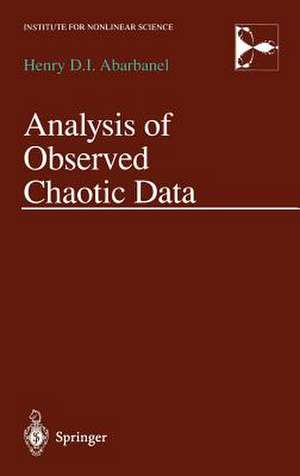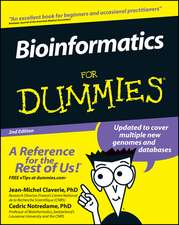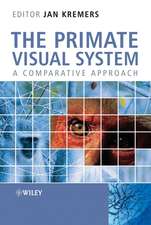Analysis of Observed Chaotic Data: Institute for Nonlinear Science
Autor Henry Abarbanelen Limba Engleză Paperback – 7 noi 1997
Preț: 470.88 lei
Preț vechi: 553.98 lei
-15% Nou
Puncte Express: 706
Preț estimativ în valută:
90.10€ • 94.31$ • 74.99£
90.10€ • 94.31$ • 74.99£
Carte tipărită la comandă
Livrare economică 31 martie-14 aprilie
Preluare comenzi: 021 569.72.76
Specificații
ISBN-13: 9780387983721
ISBN-10: 0387983724
Pagini: 272
Ilustrații: XIV, 272 p.
Dimensiuni: 155 x 235 x 16 mm
Greutate: 0.41 kg
Ediția:1st ed. 1996. 2nd printing 1997
Editura: Springer
Colecția Springer
Seria Institute for Nonlinear Science
Locul publicării:New York, NY, United States
ISBN-10: 0387983724
Pagini: 272
Ilustrații: XIV, 272 p.
Dimensiuni: 155 x 235 x 16 mm
Greutate: 0.41 kg
Ediția:1st ed. 1996. 2nd printing 1997
Editura: Springer
Colecția Springer
Seria Institute for Nonlinear Science
Locul publicării:New York, NY, United States
Public țintă
GraduateCuprins
1 Introduction.- 1.1 Chatter in Machine Tools.- 2 Reconstruction of Phase Space.- 2.1 Observations of Regular and Chaotic Motions.- 2.2 Chaos in Continuous and Discrete Time Dynamics.- 2.3 Observed Chaos.- 2.4 Embedding: Phase Space Reconstruction.- 2.5 Reconstruction Demystified.- 3 Choosing Time Delays.- 3.1 Prescriptions for a Time Delay.- 3.2 Chaos as an Information Source.- 3.3 Average Mutual Information.- 3.4 A Few Remarks About I(T).- 4 Choosing the Dimension of Reconstructed Phase Space.- 4.1 Global Embedding Dimension dE.- 4.2 Global False Nearest Neighbors.- 4.3 A Few Remarks About Global False Nearest Neighbors.- 4.4 False Strands.- 4.5 Other Methods for Identifying dE.- 4.6 The Local or Dynamical Dimension dL.- 4.7 Forward and Backward Lyapunov Exponents.- 4.8 Local False Neighbors.- 4.9 A Few Remarks About Local False Nearest Neighbors.- 5 Invariants of the Motion.- 5.1 Invariant Characteristics of the Dynamics.- 5.2 Fractal Dimensions.- 5.3 Global Lyapunov Exponents.- 5.4 Lyapunov Dimension.- 5.5 Global Lyapunov Exponents from Data.- 5.6 Local Lyapunov Exponents.- 5.7 Local Lyapunov Exponents from Data.- 5.8 A Few Remarks About Lyapunov Exponents.- 6 Modeling Chaos.- 6.1 Model Making in Chaos.- 6.2 Local Models.- 6.3 Global Models.- 6.4 Phase Space Models for Dependent Dynamical Variables.- 6.5 “Black Boxes” and Physics.- 7 Signal Separation.- 7.1 General Comments.- 7.2 Full Knowledge of the Dynamics.- 7.3 Knowing a Signal: Probabilistic Cleaning.- 7.4 “Blind” Signal Separation.- 7.5 A Few Remarks About Signal Separation.- 8 Control and Chaos.- 8.1 Parametric Control to Unstable Periodic Orbits.- 8.2 Other Controls.- 8.3 Examples of Control.- 8.4 A Few (Irreverent) Remarks About Chaos and Control.- 9 Synchronization of Chaotic Systems.- 9.1Identical Systems.- 9.2 Dissimilar Systems.- 9.3 Mutual False Nearest Neighbors.- 9.4 Predictability Tests for Generalized Synchronization.- 9.5 A Few Remarks About Synchronization.- 10 Other Example Systems.- 10.1 Chaotic Laser Intensity Fluctuations.- 10.2 Chaotic Volume Fluctuations of the Great Salt Lake.- 10.3 Chaotic Motion in a Fluid Boundary Layer.- 11 Estimating in Chaos: Cramér-Rao Bounds.- 11.1 The State Estimation Problem.- 11.2 The Cramér-Rao Bound.- 11.3 Symmetric Linear Dynamics.- 11.4 Arbitrary, Time-Invariant, Linear Systems.- 11.5 Nonlinear, Chaotic Dynamics.- 11.6 Connection with Chaotic Signal Separation.- 11.7 Conclusions.- 12 Summary and Conclusions.- 12.1 The Toolkit-Present and Future.- 12.2 Making ‘Physics’ out of Chaos-Present and Future.- 12.3 Topics for the Next Edition.- A.1 Information Theory and Nonlinear Systems.- A.2 Stability and Instability.- A.2.1 Lorenz Model.- References.
Caracteristici
Bestselling title now available as inexpensive softcover * * Provides a toolkit of tried-and-tested methods for analyzing signals from nonlinear sources * Methods are applicable in physics, biology, geophysics, and control and communications engineering * Many illustrative examples





















